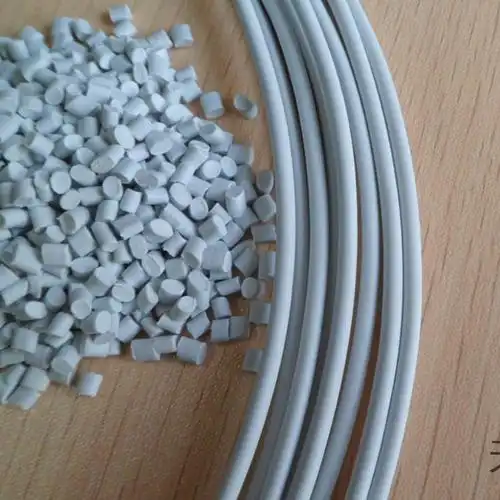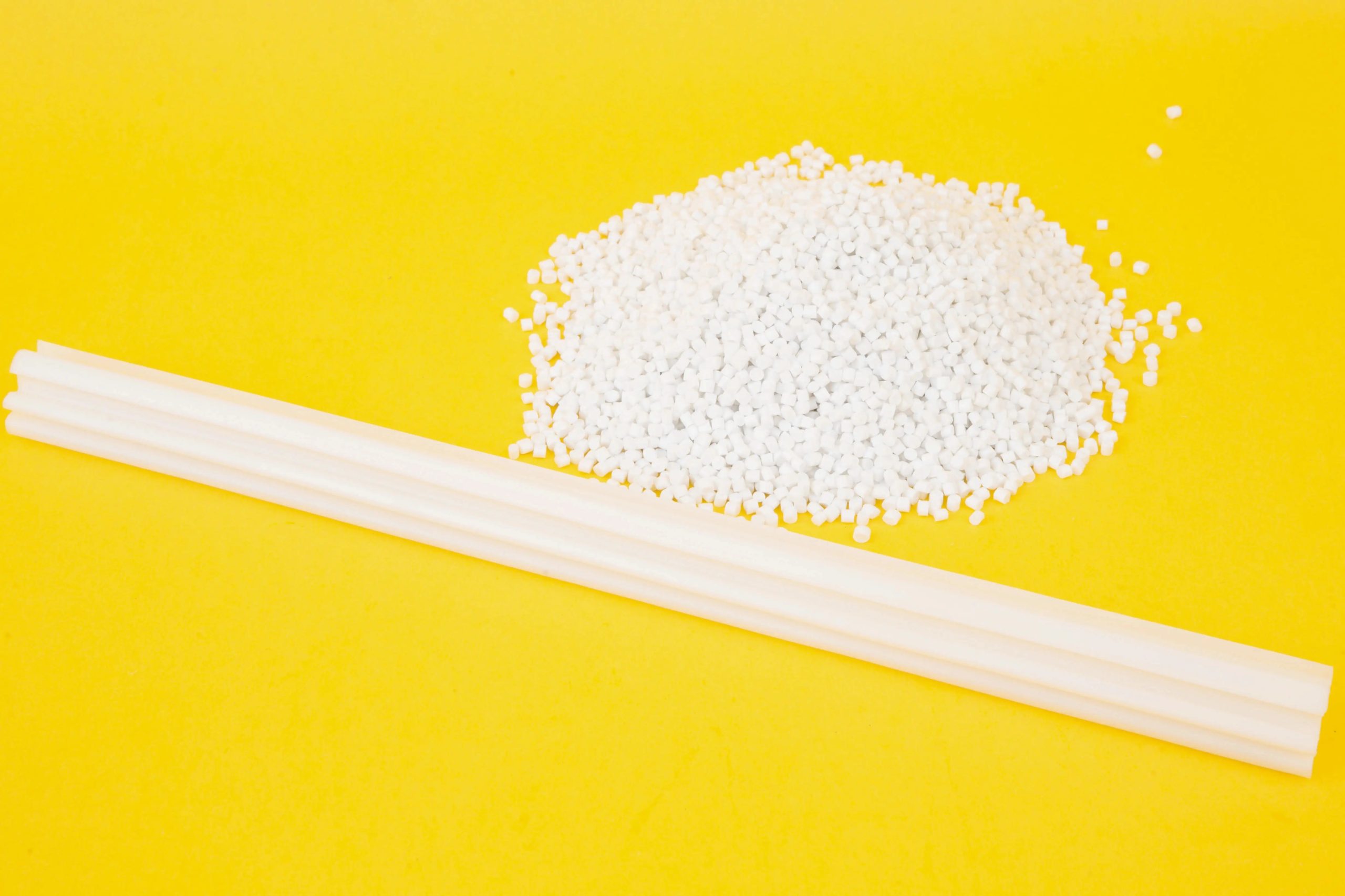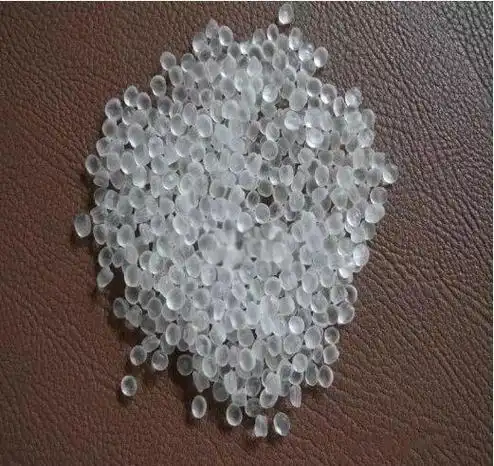In the world of thermoplastic elastomers (TPEs), achieving the right balance of flexibility, durability, and processability is crucial. TPEs are a class of polymers that combine the properties of rubber and plastic, offering a wide range of applications from automotive parts to consumer goods. One of the key factors in tailoring TPEs to specific applications is the use of softeners. As someone who has been deeply involved in the TPE industry for years, working with various formulations and seeing firsthand how different softeners impact the final product, I’m excited to share my insights on this topic.
Understanding TPEs and the Need for Softeners
Before diving into the types of softeners used for TPEs, let’s first understand what TPEs are and why softeners are necessary. TPEs are composed of hard and soft segments. The hard segments provide strength and rigidity, while the soft segments contribute to flexibility and elasticity. However, in many cases, the natural flexibility of TPEs may not be sufficient for certain applications. This is where softeners come into play.
Softeners, also known as plasticizers, are additives that are incorporated into TPE formulations to increase their flexibility, reduce their hardness, and improve their processability. They work by reducing the intermolecular forces between the polymer chains, allowing them to move more freely and thus increasing the material’s flexibility. Additionally, softeners can also enhance the flow properties of TPEs during processing, making them easier to mold, extrude, or otherwise shape into the desired form.

Types of Softeners for TPEs
There are several types of softeners that are commonly used in TPE formulations. Each type has its own unique properties, advantages, and limitations, and the choice of softener depends on the specific requirements of the application. Here are some of the most commonly used softeners for TPEs:
1. Phthalate Esters
Phthalate esters have long been the most widely used softeners in the TPE industry. They are known for their excellent compatibility with a wide range of polymers, including TPEs, and their ability to provide good flexibility and low-temperature performance. Phthalate esters are available in a variety of molecular weights and structures, allowing for fine-tuning of the softening effect.
However, in recent years, there has been growing concern about the potential health and environmental risks associated with phthalate esters. Some studies have suggested that certain phthalates may have endocrine-disrupting properties, leading to restrictions on their use in certain applications, particularly those involving children’s products and food contact materials. As a result, many manufacturers are now looking for alternative softeners that offer similar performance without the associated risks.
2. Non-Phthalate Esters
In response to the concerns about phthalate esters, the industry has developed a range of non-phthalate esters as alternatives. These softeners offer similar performance to phthalate esters in terms of flexibility and processability but are generally considered to be safer from a health and environmental perspective.
Non-phthalate esters include adipates, sebacates, and citrates, among others. They are often used in applications where phthalate esters are restricted or where there is a preference for more environmentally friendly materials. However, it’s important to note that not all non-phthalate esters are created equal, and their performance may vary depending on the specific formulation and application.
3. Epoxidized Soybean Oil (ESBO)
Epoxidized soybean oil is a natural, renewable softener that is derived from soybeans. It is gaining popularity in the TPE industry due to its environmental benefits and good compatibility with TPEs. ESBO offers good flexibility and low-temperature performance, as well as excellent thermal stability and resistance to UV degradation.
One of the main advantages of ESBO is its low toxicity and environmental impact. It is biodegradable and does not contain any harmful chemicals, making it a preferred choice for applications where environmental concerns are a priority. Additionally, ESBO is often more cost-effective than some synthetic softeners, further enhancing its appeal.

4. Polyester-Based Softeners
Polyester-based softeners are another class of softeners that are used in TPE formulations. They are known for their high molecular weight and good compatibility with TPEs, providing excellent flexibility and permanent softening effects. Polyester-based softeners are often used in applications where long-term durability and resistance to migration are required.
However, polyester-based softeners can be more expensive than some other types of softeners, and they may also have a higher viscosity, which can affect the processability of the TPE. Additionally, their compatibility with certain polymers may be limited, requiring careful formulation to ensure optimal performance.
5. Hydrocarbon Resins
Hydrocarbon resins are a type of petroleum-based softener that are used in TPE formulations to improve flexibility and adhesion. They are often used in combination with other softeners to achieve the desired balance of properties. Hydrocarbon resins can provide good compatibility with TPEs and offer excellent thermal stability and resistance to aging.
One of the main advantages of hydrocarbon resins is their ability to enhance the adhesion of TPEs to other materials, such as metals or plastics. This makes them particularly useful in applications where TPEs are used as adhesives or coatings. However, hydrocarbon resins may also have a higher density and lower flexibility compared to some other types of softeners, which may limit their use in certain applications.
Comparison of TPE Softeners
To help you better understand the differences between the various types of softeners used for TPEs, here’s a comparison table:
| Softener Type | Advantages | Disadvantages | Common Applications |
|---|---|---|---|
| Phthalate Esters | Excellent compatibility, good flexibility, low-temperature performance | Potential health and environmental risks, restricted in some applications | General-purpose TPEs, automotive parts, consumer goods |
| Non-Phthalate Esters | Similar performance to phthalates, safer from a health and environmental perspective | Performance may vary depending on the specific formulation | Applications where phthalates are restricted, children’s products, food contact materials |
| Epoxidized Soybean Oil (ESBO) | Natural, renewable, low toxicity, good environmental impact, good flexibility and thermal stability | May have limited compatibility with certain polymers, higher cost compared to some synthetic softeners | Environmentally friendly applications, medical devices, packaging materials |
| Polyester-Based Softeners | High molecular weight, good compatibility, excellent flexibility and permanent softening effects, good thermal stability and resistance to migration | More expensive, higher viscosity, limited compatibility with certain polymers | Applications requiring long-term durability and resistance to migration, high-performance TPEs |
| Hydrocarbon Resins | Improves flexibility and adhesion, good thermal stability and resistance to aging | Higher density, lower flexibility compared to some other softeners | Applications where TPEs are used as adhesives or coatings, automotive under-the-hood components |
Factors to Consider When Choosing a Softener for TPEs
When selecting a softener for TPEs, there are several factors to consider:
1. Application Requirements
The first and foremost consideration is the specific requirements of the application. This includes factors such as the desired flexibility, hardness, low-temperature performance, thermal stability, and resistance to aging. Additionally, any regulatory or safety requirements, such as restrictions on the use of certain chemicals, must also be taken into account.
2. Compatibility with TPEs
The softener must be compatible with the specific type of TPE being used. This includes considerations such as the polymer’s chemical structure, molecular weight, and processing conditions. Incompatibility can lead to issues such as phase separation, migration, or reduced performance.
3. Processing Conditions
The processing conditions, such as temperature, pressure, and shear rate, can also affect the choice of softener. Some softeners may be more suitable for high-temperature processing, while others may be more suitable for low-temperature or ambient-temperature processing. Additionally, the viscosity of the softener can impact the flow properties of the TPE during processing.

4. Cost and Availability
Cost and availability are also important considerations. Some softeners may be more expensive than others, which can impact the overall cost of the TPE formulation. Additionally, the availability of the softener may vary depending on the region and supplier.
5. Environmental and Safety Considerations
Finally, environmental and safety considerations must also be taken into account. This includes factors such as the toxicity of the softener, its biodegradability, and its impact on the environment during production, use, and disposal. Additionally, any potential health risks associated with the softener must be evaluated and mitigated.
Conclusion
In conclusion, the choice of softener for TPEs is a critical decision that can significantly impact the performance and properties of the final product. There are several types of softeners available, each with its own unique advantages and limitations. When selecting a softener, it’s important to consider the specific requirements of the application, the compatibility with the TPE, the processing conditions, the cost and availability, and the environmental and safety considerations.
As the TPE industry continues to evolve, there is a growing demand for more sustainable and environmentally friendly materials. This has led to the development of new types of softeners, such as those derived from renewable resources, that offer similar performance to traditional softeners but with a lower environmental impact. Additionally, advances in formulation technology are allowing for more precise control over the properties of TPEs, enabling manufacturers to tailor their formulations to specific applications.
By understanding the different types of softeners available and the factors to consider when selecting a softener, manufacturers can optimize their TPE formulations to achieve the desired balance of properties and performance. Whether it’s for automotive parts, consumer goods, medical devices, or any other application, the right softener can make all the difference in the success of a TPE product.

Related Questions
Q1: Can I use multiple softeners in a single TPE formulation?
A1: Yes, it is possible to use multiple softeners in a single TPE formulation. This can be done to achieve a specific balance of properties, such as combining a softener with good flexibility with another that offers excellent thermal stability. However, it’s important to carefully consider the compatibility of the softeners with each other and with the TPE, as well as any potential interactions that may affect the performance of the final product.
Q2: How do I determine the optimal amount of softener to use in a TPE formulation?
A2: The optimal amount of softener to use in a TPE formulation depends on several factors, including the specific type of TPE, the desired properties of the final product, and the processing conditions. Generally, the amount of softener is determined through a process of trial and error, where different formulations are tested and evaluated for their performance. Additionally, some manufacturers may use predictive modeling or simulation tools to help optimize the formulation.
Q3: Are there any regulatory restrictions on the use of softeners in TPEs?
A3: Yes, there are regulatory restrictions on the use of certain softeners in TPEs, particularly those that are considered to be hazardous to human health or the environment. For example, many countries have restrictions on the use of phthalate esters in children’s products and food contact materials. It’s important for manufacturers to be aware of these regulations and to ensure that their formulations comply with all applicable standards.
Q4: Can I replace a phthalate ester softener with a non-phthalate ester in an existing TPE formulation?
A4: In some cases, it may be possible to replace a phthalate ester softener with a non-phthalate ester in an existing TPE formulation. However, this should be done with caution, as the performance of the final product may be affected. Non-phthalate esters may have different properties, such as viscosity, compatibility, and migration behavior, compared to phthalate esters. It’s recommended to conduct thorough testing and evaluation before making any changes to an existing formulation.
Q5: What are some emerging trends in TPE softeners?
A5: Some emerging trends in TPE softeners include the development of more sustainable and environmentally friendly materials, such as those derived from renewable resources. Additionally, there is a growing interest in bio-based softeners that offer similar performance to traditional softeners but with a lower carbon footprint. Another trend is the use of nanotechnology to enhance the properties of softeners, such as improving their compatibility with TPEs or increasing their efficiency.





